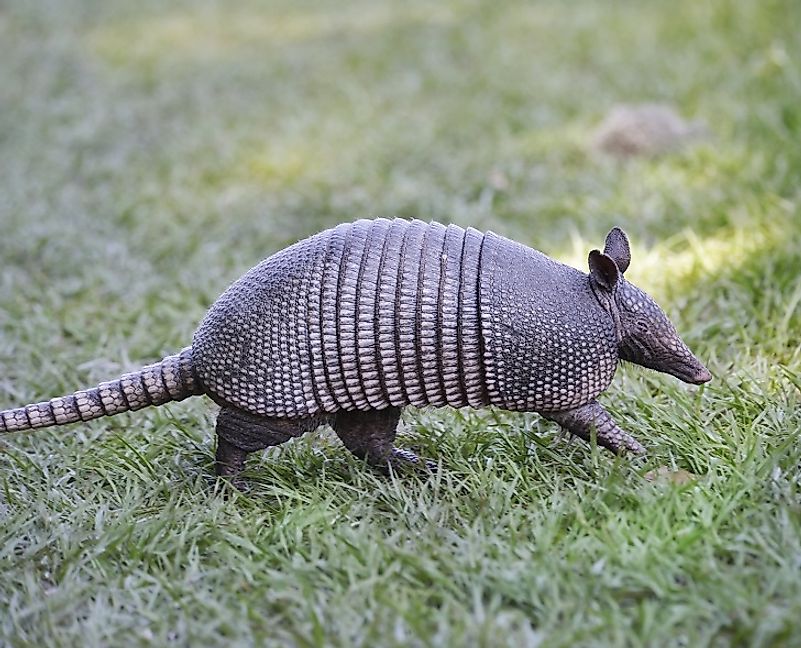Armadillos - Animals Of The Americas

5. Physical Description
All Armadillos are immediately recognizable by their long snouts, long tails and barrel-shaped bodies. Armadillos range in size from six inches to over five feet, and can weigh as little as 3 ounces (85 grams) to as much as 120 pounds (54 kilograms). Armadillos are usually earth-tone in coloring, like brown, red and gray. The pink fairy Armadillos, only found in Argentina, are a notable exception. It has a soft, pink-colored shell, and a white, fur-like covering on its belly. Out of all varieties, only the three-banded armadillo is capable of completely shielding itself from predators by curling up into a penetration-proof ball. In the Andes, their shells have been used in constructing traditional lutes by cottage industry producers of musical instruments.
4. Diet
Armadillos feed on invertebrates, like grubs, ants, beetles and termites, that dwell in moist soil. They have sharp claws and strong legs which are ideally suited to digging out their food. Their sticky tongues are extremely efficient at scooping up prey and delivering it into their mouths. Armadillos rely on their good sense of smell to find food as their eyesight and hearing are not strong enough to be of much help.
3. Habitat and Range
There are about twenty varieties of Armadillos. Armadillos, due to their inherently low body temperatures and the possession of minuscule body fat depositions, prefer to live in warmer climes. They are found as far south as Argentina and north into Central America. Paraguay is home to eleven different varieties. Only one variety, the nine-banded armadillo, has extended its range into the United States. This armadillo, which is increasing in numbers due to a lack of natural predators, is common in Texas, Florida, and South Carolina. Otherwise, armadillos are considered a “threatened species”, with their numbers declining due to habitat loss and unchecked hunting.
2. Behavior
Armadillos tend to be solitary animals, associating with others only to mate or when extra warmth is needed. They live in areas where the soil is soft so they can easily dig a series of bolt-holes, or burrows, for sleeping. The bolt-holes are connected by tunnels to allow for quick escape from danger. Armadillos mark their territory with urine or feces, and defend it when necessary by kicking and chasing intruders. They sleep up to sixteen hours per day, awakening from their slumber in the morning and evening to hunt for food and to eat it.
1. Reproduction
Most of what is known about reproduction and mating in armadillos is based on the habits of the nine-banded species found in the USA. Mating, performed missionary style, occurs during the summer months, although it has been observed as late as December. The female has a unique adaptation which allows her to delay the onset of her pregnancy until environmental conditions are safer or food is most plentiful. Following a four-month gestation period, the nine-banded armadillo births four identical pups, all from the same egg. Litter sizes for other varieties can range up to fifteen identical pups, as is the case for the seven-banded armadillo. Pups are weaned by about four months and reach full maturity, with the ability to reproduce, by age nine to twelve months. The lifespan of armadillos varies from four to thirty years, with a median life expectancy of sixteen years.











